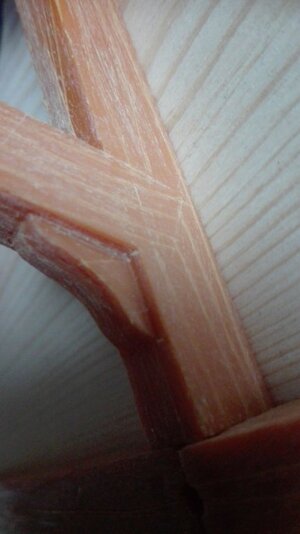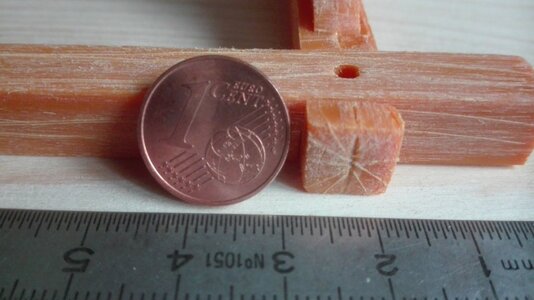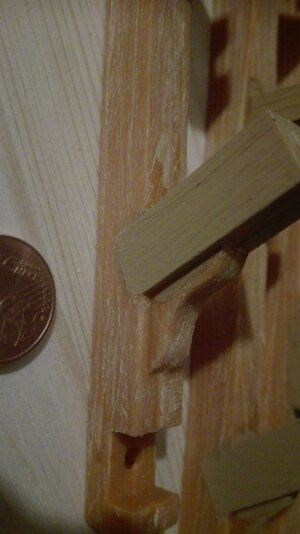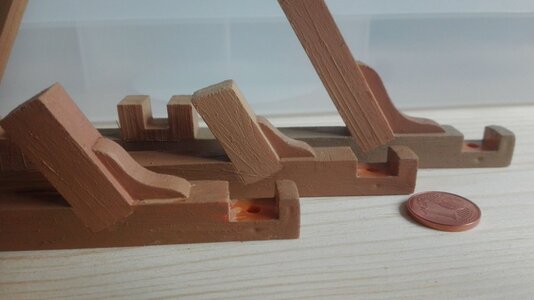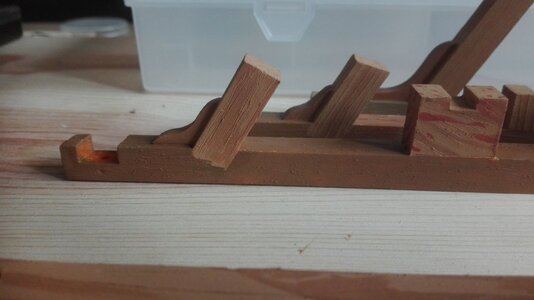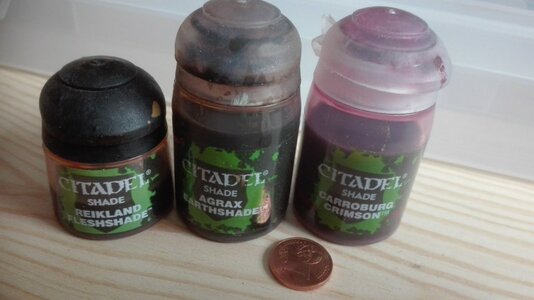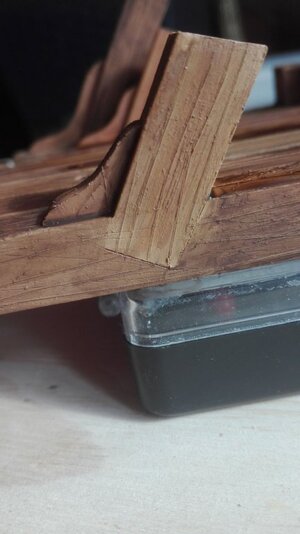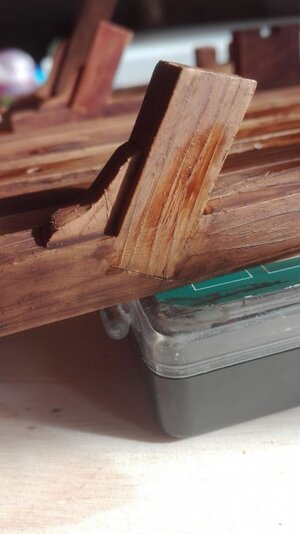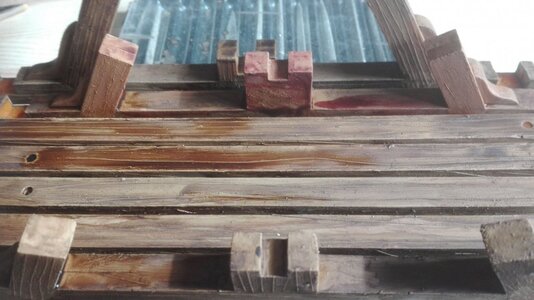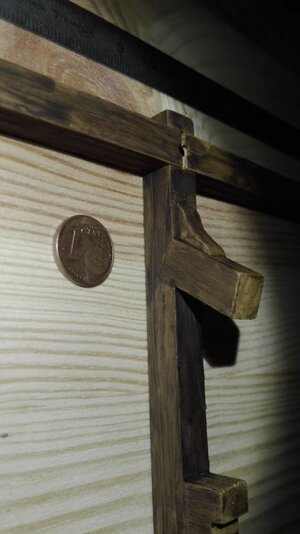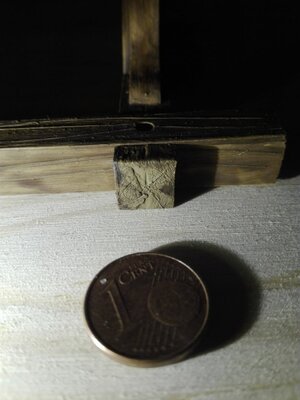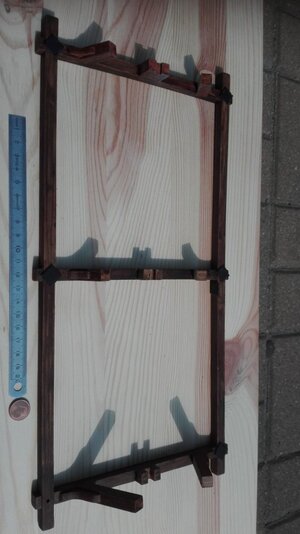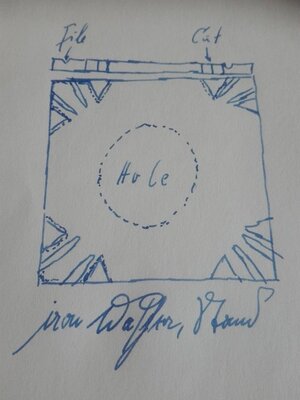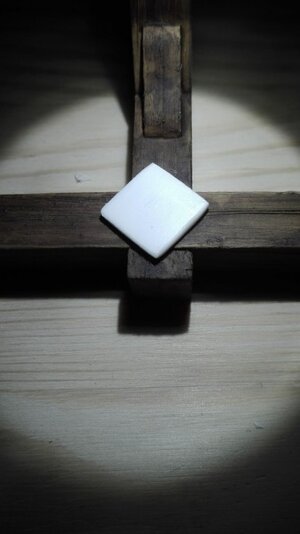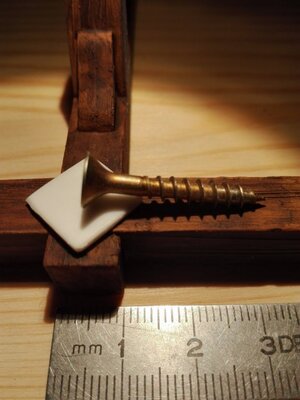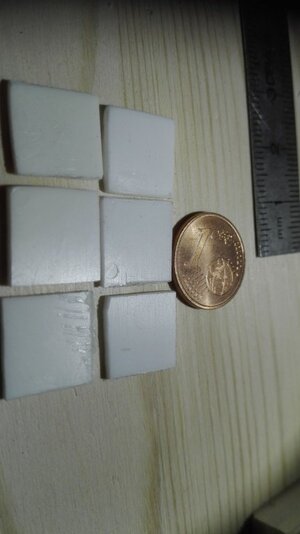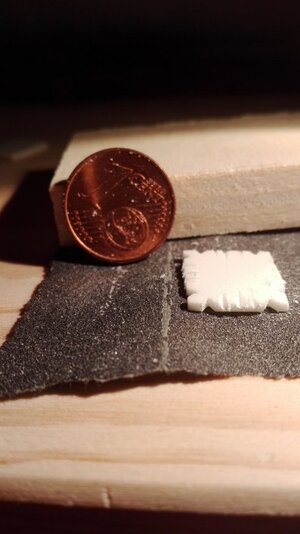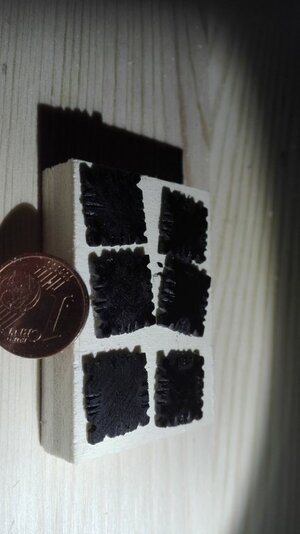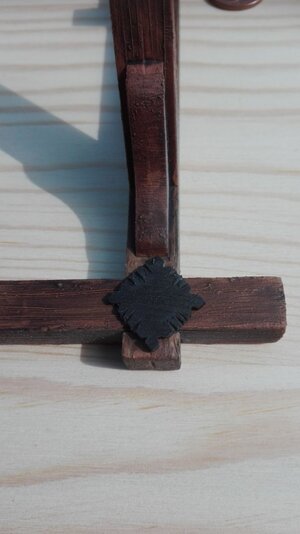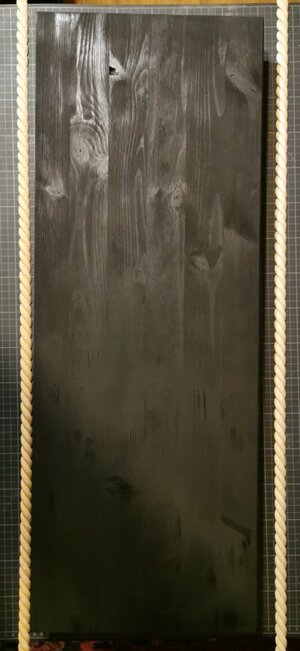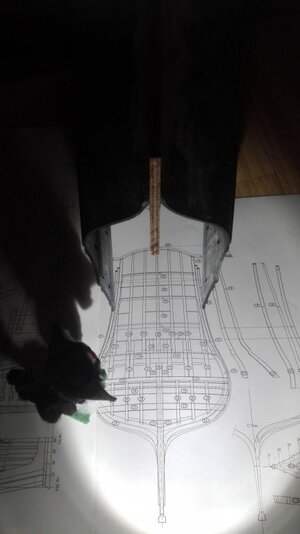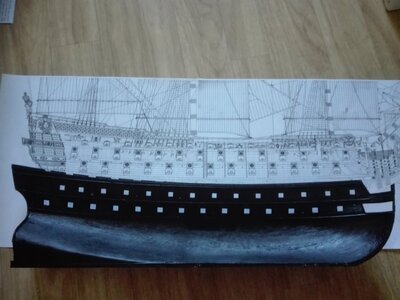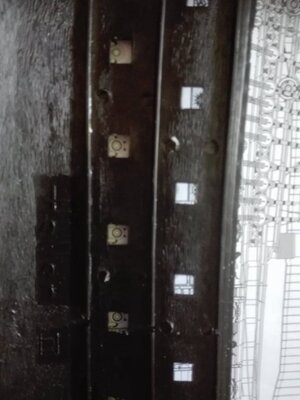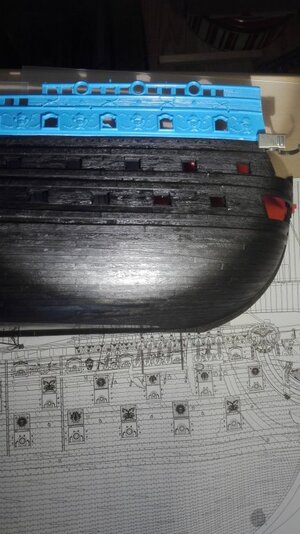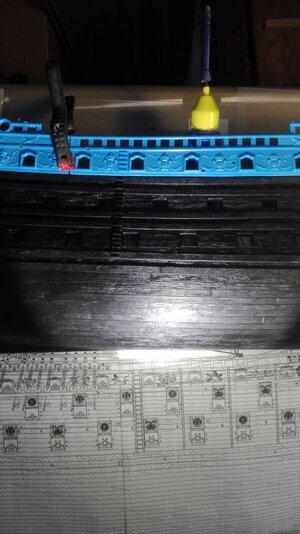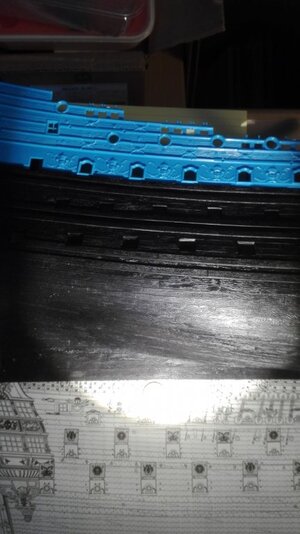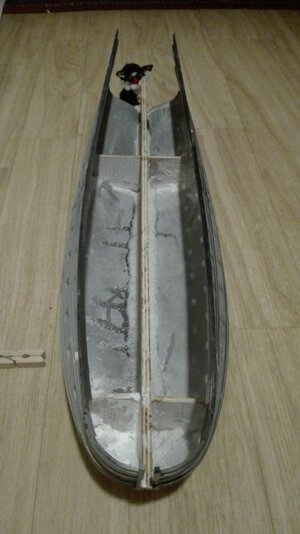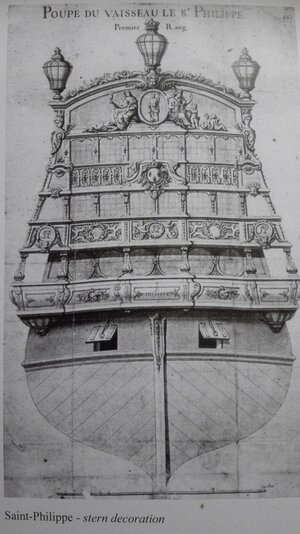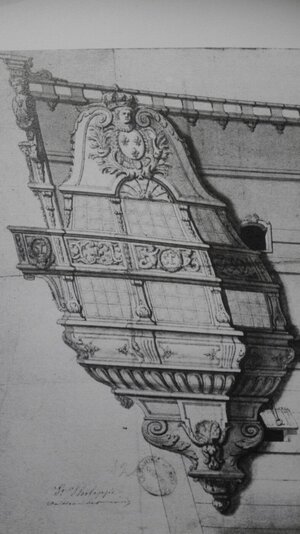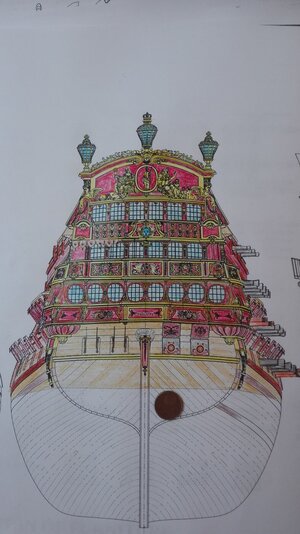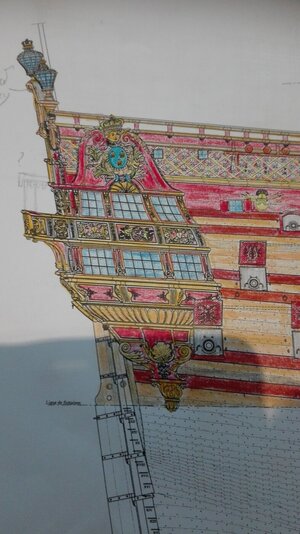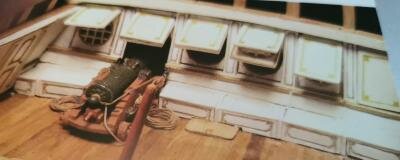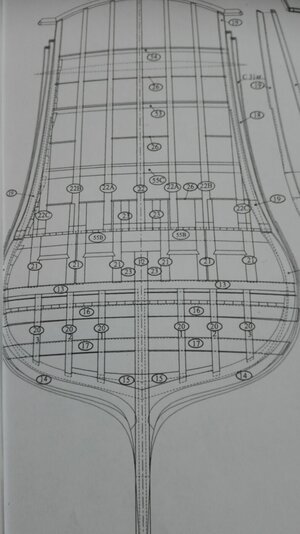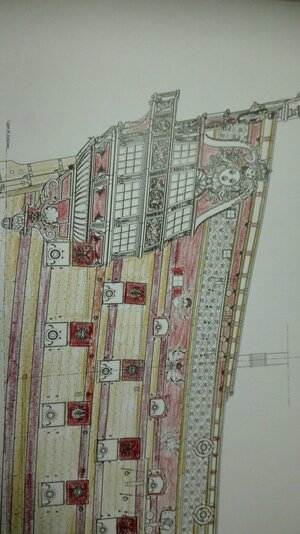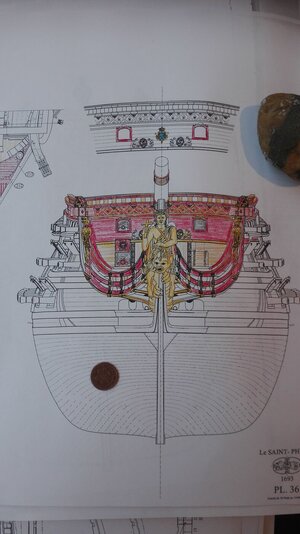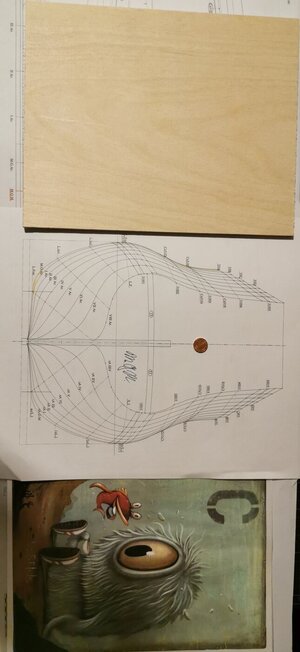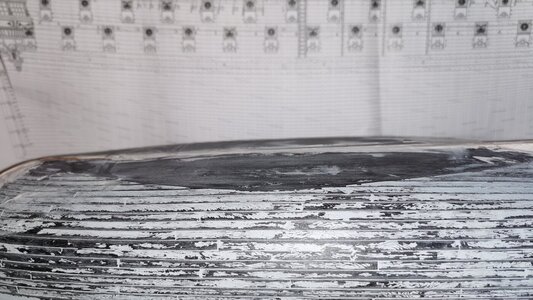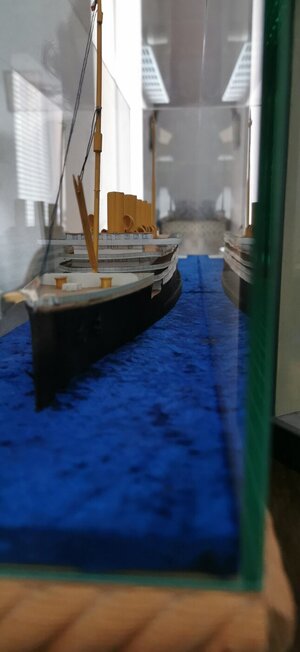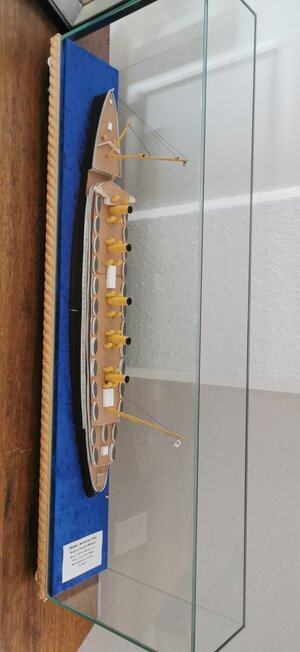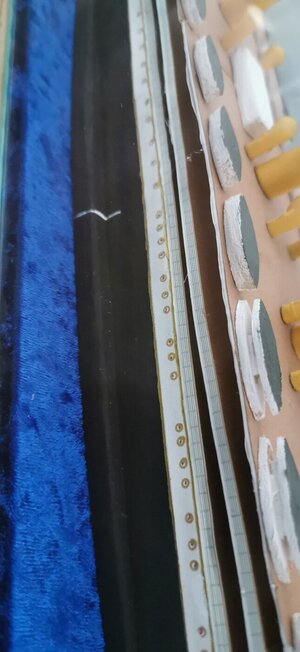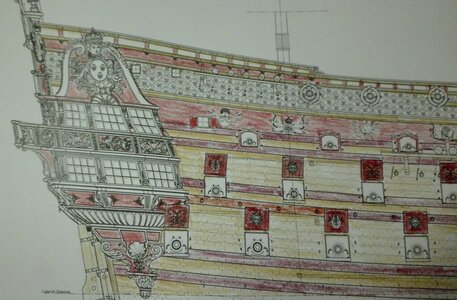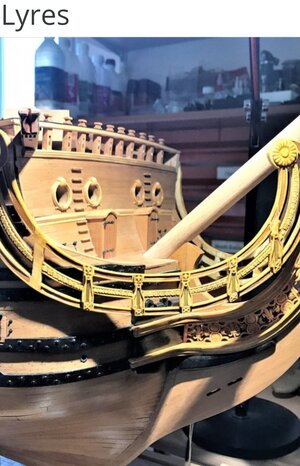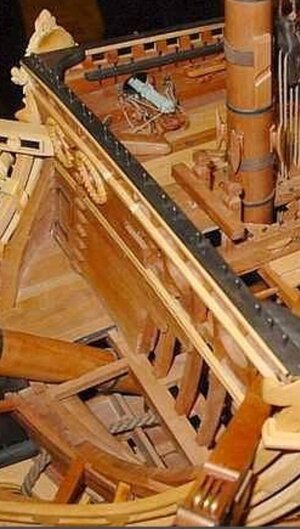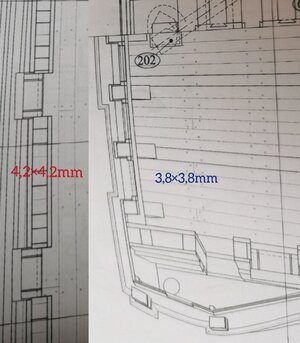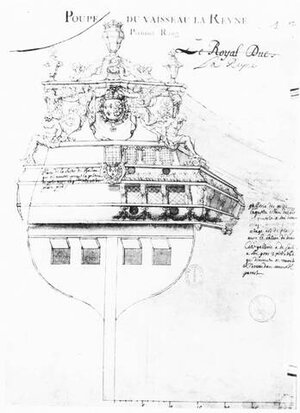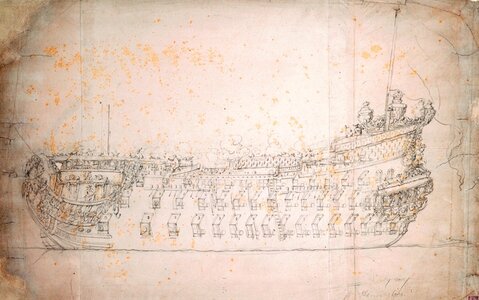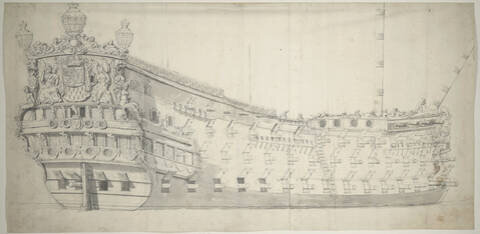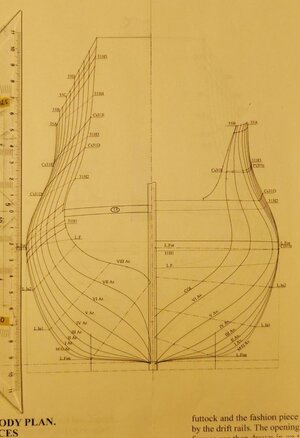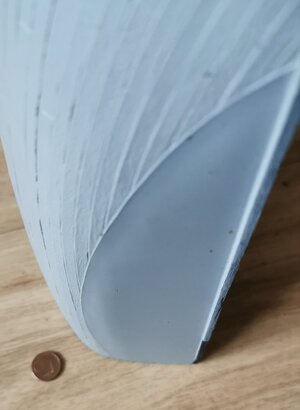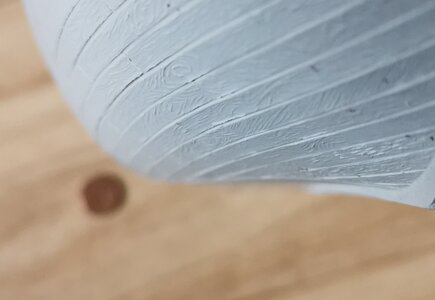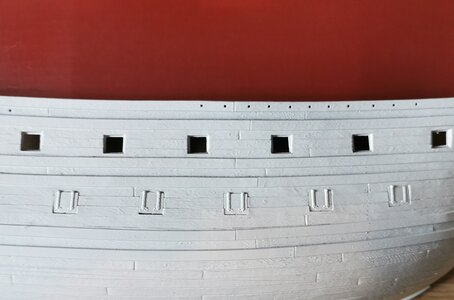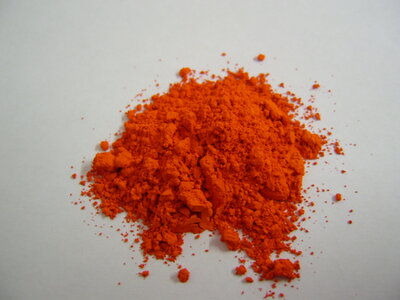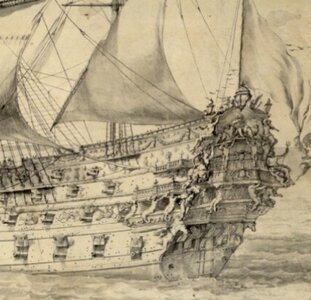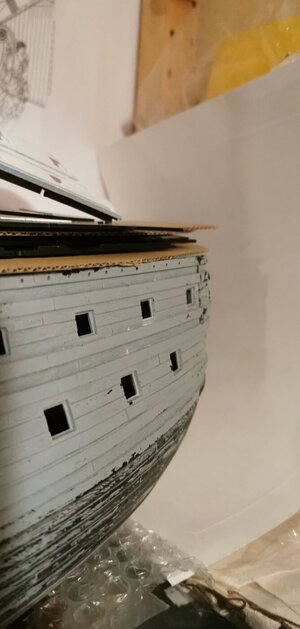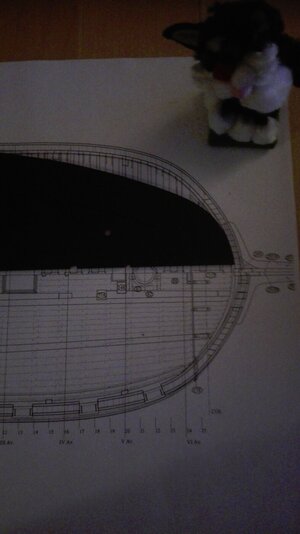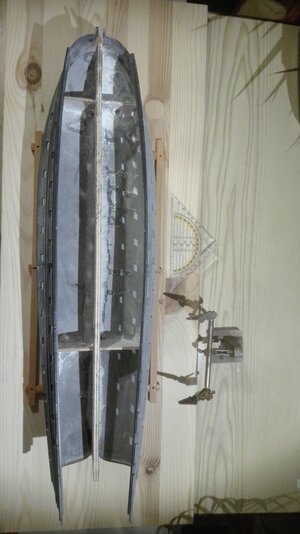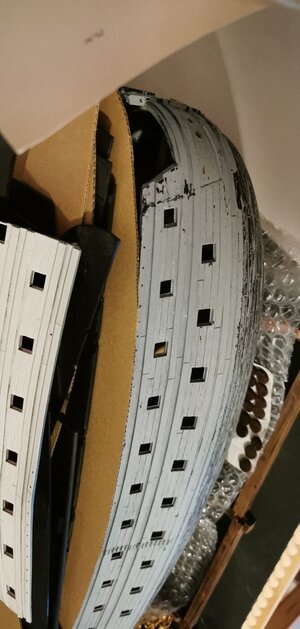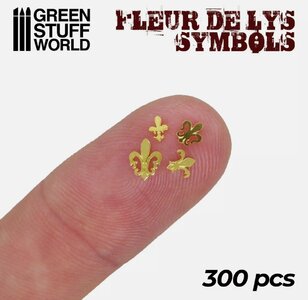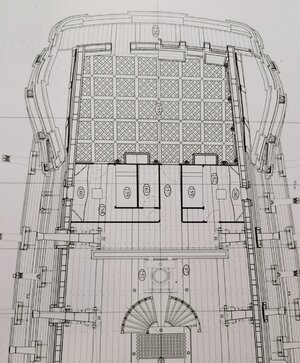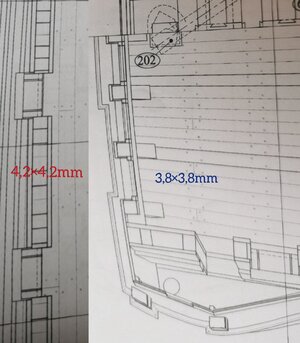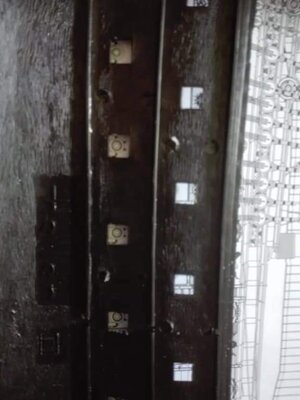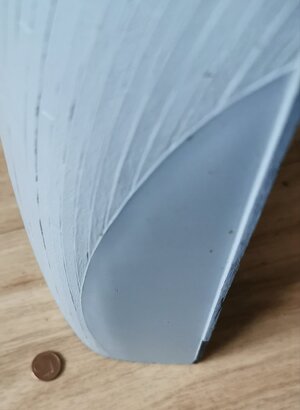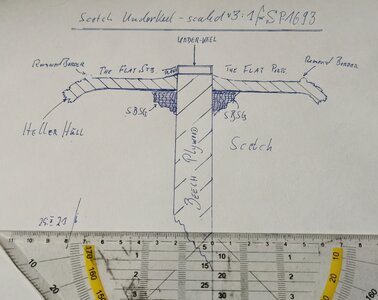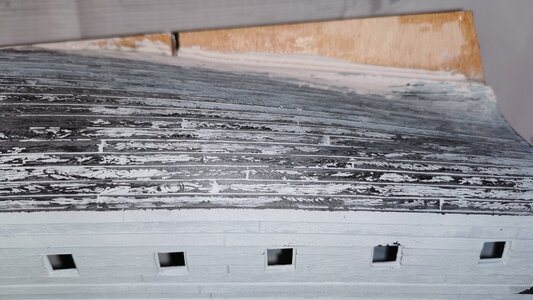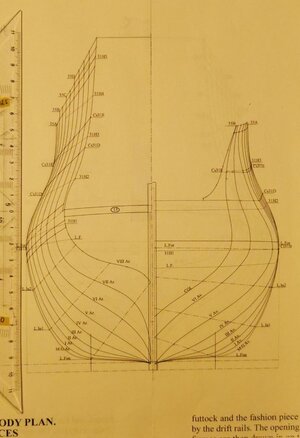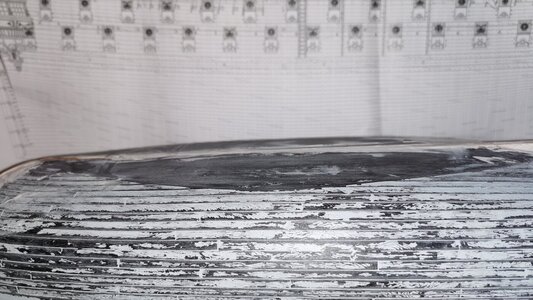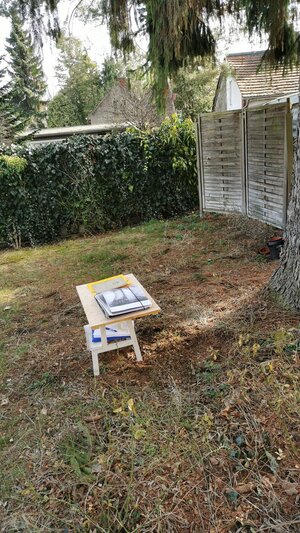Hello,
as some of you may know I still have a smaller SAINT PHILIPPE 1693 project and I started his two years ago motivated by the statement of Hubac's Historian (not word by word) "the best you can do to the Heller kit is to rebuild it as a SP based on the Ancre set of plans". So I reprinted all the plans down to 1:92 when figured out the scale given by the hull.
So I have got my smaller project in scale and a ready to run hull ;-) to test out some ideas I do critique on the Lemineur set of plans. Yes I historically dislike his solution for the pair of 24(?) pounders piercing through the transoms lowest floor - changing a given balkony into a wall. But to this point of trouble later more. So my first idea was he needed urgently to come up to 90 guns and so he designd something spectacular carpenters work into the historical proofed artwork of the transom... but I do not believe in his solution. My idea is to add a pair of gunports high above to come two my 90 guns withba pair of light ordonance or to add a third and fourth gun through the bulkhead breakhead as under the transom. So there is a plenty of historical discussion on my way to the SP 1693 that is of outrageous benefit to the 1/64 scratch build. But I will show my motivation later on in detail.
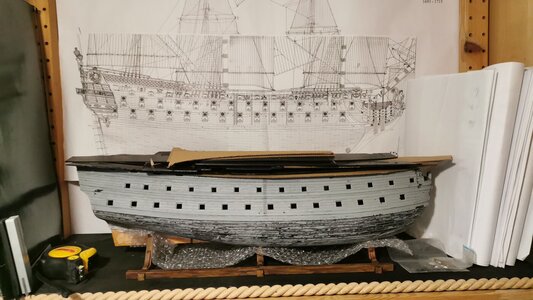
This is the recent situation
So I decided to run into this project - and this is the state of the kit's rebuild recently - but as I tend to overdo it I didnt cut the hull down to the waterline I voted for a hull model.
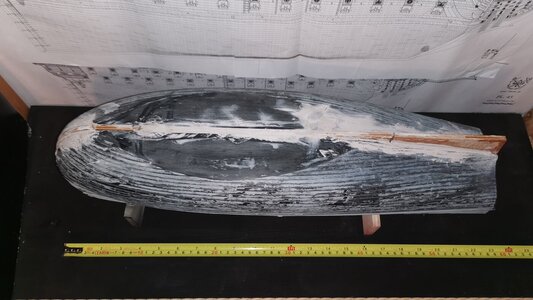
So there was added a 7mm board from straight flat beech plywood between the hull's halfs. This was giving some 644mm to the hull's breadth - some french double foot... The hull is moulded too narrow and too slim in some areas (we will come to this later on). I am very happy haven't decided for the J-shaped additive part I firstly planned with. By adding two halsbulkheads each side The hull got a good stiffnes. The inner corpus was taken by filling the clamped hull by building foam and cutting this into slices.
But the hull couldn't keep it's original keel - as a new one has to be build - so it was cut away and sanded. Then the problem was to glue wood onto plastic without betting the heat of a off going two components glue... I fixed this by mixing deco sand, baking powder and "some pints" of superglue. (A trick I copied and enlaged by sand from an Australian chap he rebuilds damaged Matchbox cars on YouTube.)
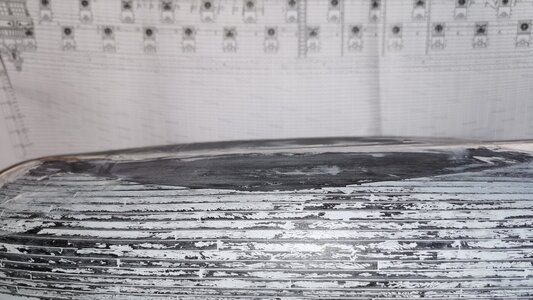
The flat bottom of the hull is really flat - not any plank is engraved with in - due to plastic moulding technology in France half a century ago. This very flat bottom is the reason why no SR builder ever placed the kit over a mirror because for this unplanked uglyness of this "flat" as I call it. But as I decided in a moment of bain damage I want to replank the hull and fix this problem by planking over it cruelly.
So the holes in the keelsom are for the stand as there two covered screwrods will keep the ship's hull upright. These prelonged screws will be running through two baroque angels (moulded from resin) glued back to back as a podestal - some demonic horrifing thought for me as a catholic... But suffers are to be made for the sunking's fleet.
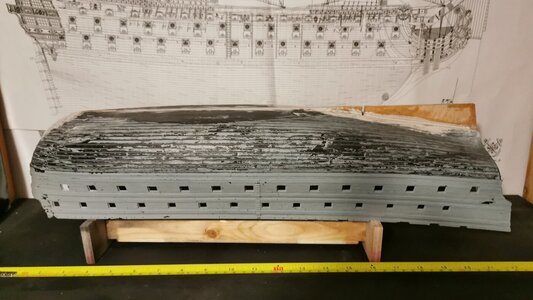
I also builded an "Australian Stand" to work on the hull as I will have to replank it by planks cut from 2mm plastic sheet. And this will be a real main issue as the beautifully made planking advises on the cut throughs in the Ancre planset doesn't match to the Heller hull. So there is a plany of work to be done but as three other SR kits are in my stack I will profit from these experiences very much for ROYAL DAUPHIN 1667 and ROYAL LOUIS 1666. My couch doctor listen to it interested and already gave a key to me for the backdoor of the locked psychiatric ward ;-)
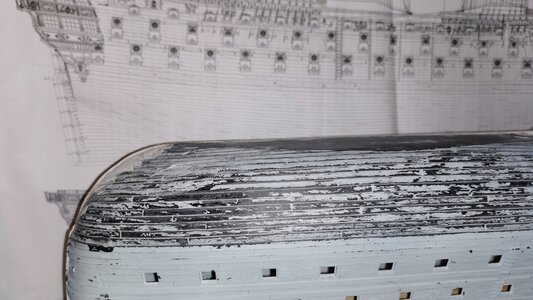
The "flat" is surrounded by a sharp edge and I will have to look carefully to add the bulkhead positions onto the Heller's hull and redo the hull as far as possible. Some problem Marc avoided by building a WLmodel.
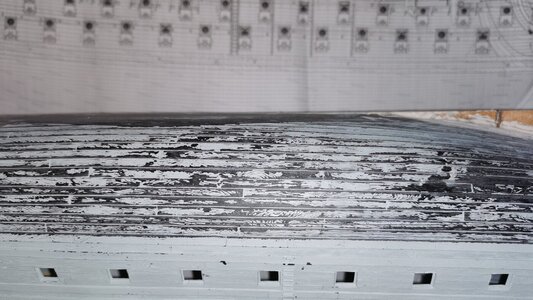
The Planking down here isn't very well done at all due to the problem to get the plastic out of the mould at all. The Heller SR is very much more a solid kit than a capricious model we do long for.
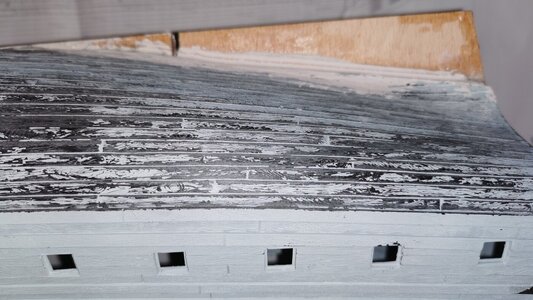
"But await the best is still to come." (F. Schiller, Wallenstein) The deadwood is much too long on the Heller kit. I do suggest building her like this as an RC model will give you the effect of water running through the aft gun ports as the stern didnt have enough buoyancy as there isn't enough hull's displacement. And I also had to cut it away with the keel - this is why I changed my mind and went to a 7mm beech plywood board.
This is the status quo of the project. I do try to find my older pictures for the next article due to the orange stand being mutated into an old oak imitating kind of thing.
as some of you may know I still have a smaller SAINT PHILIPPE 1693 project and I started his two years ago motivated by the statement of Hubac's Historian (not word by word) "the best you can do to the Heller kit is to rebuild it as a SP based on the Ancre set of plans". So I reprinted all the plans down to 1:92 when figured out the scale given by the hull.
So I have got my smaller project in scale and a ready to run hull ;-) to test out some ideas I do critique on the Lemineur set of plans. Yes I historically dislike his solution for the pair of 24(?) pounders piercing through the transoms lowest floor - changing a given balkony into a wall. But to this point of trouble later more. So my first idea was he needed urgently to come up to 90 guns and so he designd something spectacular carpenters work into the historical proofed artwork of the transom... but I do not believe in his solution. My idea is to add a pair of gunports high above to come two my 90 guns withba pair of light ordonance or to add a third and fourth gun through the bulkhead breakhead as under the transom. So there is a plenty of historical discussion on my way to the SP 1693 that is of outrageous benefit to the 1/64 scratch build. But I will show my motivation later on in detail.

This is the recent situation
So I decided to run into this project - and this is the state of the kit's rebuild recently - but as I tend to overdo it I didnt cut the hull down to the waterline I voted for a hull model.

So there was added a 7mm board from straight flat beech plywood between the hull's halfs. This was giving some 644mm to the hull's breadth - some french double foot... The hull is moulded too narrow and too slim in some areas (we will come to this later on). I am very happy haven't decided for the J-shaped additive part I firstly planned with. By adding two halsbulkheads each side The hull got a good stiffnes. The inner corpus was taken by filling the clamped hull by building foam and cutting this into slices.
But the hull couldn't keep it's original keel - as a new one has to be build - so it was cut away and sanded. Then the problem was to glue wood onto plastic without betting the heat of a off going two components glue... I fixed this by mixing deco sand, baking powder and "some pints" of superglue. (A trick I copied and enlaged by sand from an Australian chap he rebuilds damaged Matchbox cars on YouTube.)

The flat bottom of the hull is really flat - not any plank is engraved with in - due to plastic moulding technology in France half a century ago. This very flat bottom is the reason why no SR builder ever placed the kit over a mirror because for this unplanked uglyness of this "flat" as I call it. But as I decided in a moment of bain damage I want to replank the hull and fix this problem by planking over it cruelly.
So the holes in the keelsom are for the stand as there two covered screwrods will keep the ship's hull upright. These prelonged screws will be running through two baroque angels (moulded from resin) glued back to back as a podestal - some demonic horrifing thought for me as a catholic... But suffers are to be made for the sunking's fleet.

I also builded an "Australian Stand" to work on the hull as I will have to replank it by planks cut from 2mm plastic sheet. And this will be a real main issue as the beautifully made planking advises on the cut throughs in the Ancre planset doesn't match to the Heller hull. So there is a plany of work to be done but as three other SR kits are in my stack I will profit from these experiences very much for ROYAL DAUPHIN 1667 and ROYAL LOUIS 1666. My couch doctor listen to it interested and already gave a key to me for the backdoor of the locked psychiatric ward ;-)

The "flat" is surrounded by a sharp edge and I will have to look carefully to add the bulkhead positions onto the Heller's hull and redo the hull as far as possible. Some problem Marc avoided by building a WLmodel.

The Planking down here isn't very well done at all due to the problem to get the plastic out of the mould at all. The Heller SR is very much more a solid kit than a capricious model we do long for.

"But await the best is still to come." (F. Schiller, Wallenstein) The deadwood is much too long on the Heller kit. I do suggest building her like this as an RC model will give you the effect of water running through the aft gun ports as the stern didnt have enough buoyancy as there isn't enough hull's displacement. And I also had to cut it away with the keel - this is why I changed my mind and went to a 7mm beech plywood board.
This is the status quo of the project. I do try to find my older pictures for the next article due to the orange stand being mutated into an old oak imitating kind of thing.
Last edited:


